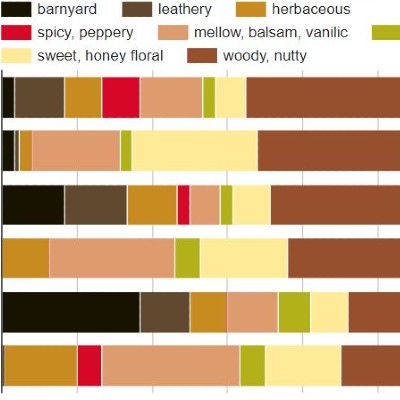Menu
-
-
F.A.Q
- How to identify genuine agarwood chip, natural or cultivated
- How to identify oil injection / absorption fake agarwood beads
- How to know if there are more than one oil in your oil
- How to make your wood bracelet or mala darker
- How to tell if an Agarwood bead sinks WITHOUT sinking it under water?
- How does back flow incense work and how do you burn it?
- Where to start if you don't know what agarwood is ?
- Why are you losing money if you buy seeds and plants?
- Which agarwood incense should I choose?
- Frequently Asked Questions
- Agarwood Related Articles
- Shipping
-
SHOP - Agarwood
-
SHOP - Other Fragrant Wood
-
SHOP - Incense Holder and Burner
-
- FREE Oud Oil guide
- Testimonials
- "Why did you buy this?"
- Contact us
- About Us
- +61430284329
- Login
-
English


How to choose the agarwood oils that you like
November 13, 2021 4 min read
How to choose the agarwood oils that you like
There are hundred of Agarwood oils on the market. Some of them we could not have a chance to experience because they are so rare.
At Grandawood, we have around 9 sustainable agarwood oils but for the purpose of simplicity I will do a brief introduction of 6 popular ones. I have summarised them in an interactive graph (move your mouse over to experience)
Purpose of this graph: To show you the change in aroma of Agarwood oil over time
Enhancing Your Agarwood Oil Experience: Storage Tips and Longer Shelf-lives Insights
Please note that the information provided in this article is a general guideline, and actual results may vary due to the natural variations in each batch of agarwood oil distillation.
Agarwood oil undergoes a fascinating transformation on your skin. Within the first 2.5 hours, you'll experience an array of scents as the more volatile notes gradually fade. After this period, the woody aroma lingers for several hours. However, if you apply the oil to a cotton swab, its fragrance can last for days or even weeks.
To maintain the quality and longevity (shelf-lives) of your agarwood oil, store it in a cool, dark place with minimal air exposure. This careful storage will result in a more viscous oil with smoother woody notes. Over time, the barnyard, leathery, spicy, and peppery scents become less noticeable as the volatile scent molecules evaporate or oxidize, leaving the stable woody notes behind. In aged oud oil, the woody notes may be the only detectable scents, but they can still offer a diverse and captivating sensory experience.
By understanding how agarwood oil changes over time and how to store it properly, you can enjoy its rich, complex fragrance for longer periods and fully appreciate the nuances of this remarkable natural product.
Unveiling the Enigmatic Aroma of Agarwood Oil: A Guide for Perfume Enthusiasts
To give a general idea about the aroma of agarwood oil when they have not tried oud oil before
I only mention 8 main notes in these 6 agarwood oils. The actual notes are much more than this.
Let me explain
Woody notes: Pinewood smells woody. Cypress smells woody, too, even though these two are different woody aromas. To identify the difference, we can say “pinewood smell” or “cypress smell” because Pine and Cypress are different species.
There are more than 200 scent molecules of agarwood oils. Out of these 200 molecules, there are more than 20 that has a description of woody. It means there are 20 different woody scents. It is difficult to represent them in words. Therefore anything that smells like wood, I will group them under “woody nutty”.
But what if the woody smell comes from the same species and smells differently? For example, cedarwood from plantation A vs cedarwood from plantation B. You may say, well, ok, let’s call it plantation A cedarwood and plantation B cedarwood. The problem is, what if you have not tried any of these cedarwoods from these plantations before? How do you describe, so everybody understands?
That is a challenge that we are facing right now.
So to make it easier for you to have an idea of how it smells, I will choose 8 main notes with some basic descriptions that most of us know.
Out of these 8 notes, there should more than one that you like. Most people enjoy the "mellow balsam vanillic note" and "Woody, nutty".
- Barnyard: Imagine you are on a farm. You will find this smell: peat, cattle manure, animalic, or fermented smell. While somebody hates this note, many people crave it. Please note there are different types of barnyard smells too. You probably have heard someone say: “my sh!t is better than yours”. In this case, it illustrates one point, the same barnyard; one is better than the others.
- Leathery: the smell of a genuine leather bag. When you smell a leather jacket, or leather bag or leather seat of a new car, you get a good idea.
- Herbaceous: dried grass, herbs. There are many different herbs. But if you have been in a Tradition Chinese Medicine clinic or store, you will get a good idea of this smell.
- Spicy, Peppery: the smell of black pepper is quite close to describing this scent
- Mellow, Balsam, Vanillic: sweet pleasant: In general, most people find this note pleasant
- Green grassy: freshness, smell like grass clippings when you mow your lawn
- Sweet, Honey floral: sweet smell: the smell of honey, flower. Very bright and pleasant. This note conjures up images of blossoming flowers and the sweetness of honey, adding a delightful touch to the agarwood oil's profile.
- Woody, nutty: the main notes of agarwood oil. These notes are the base notes of agarwood oil. And the woodiness of one oud oil is different from others.
While the list above offers a starting point for understanding agarwood oil's aroma complexity, it is by no means exhaustive. As research continues, new scent molecules are discovered, further enriching the fascinating world of agarwood oil.
Now that you have an idea of the captivating scent profile of agarwood oil, you can embark on a sensory journey to explore this extraordinary natural product. Embrace the diversity of its notes and discover the unique combinations that resonate with you, whether it's the mellow balsam vanillic or the woody, nutty essence. Agarwood oil's enigmatic aroma awaits your discovery.
Leave a comment
Comments will be approved before showing up.
Also in News

What is Tasbih? The Deep Meaning of Subhan Allah and the Role of Prayer Beads
November 09, 2025 4 min read


